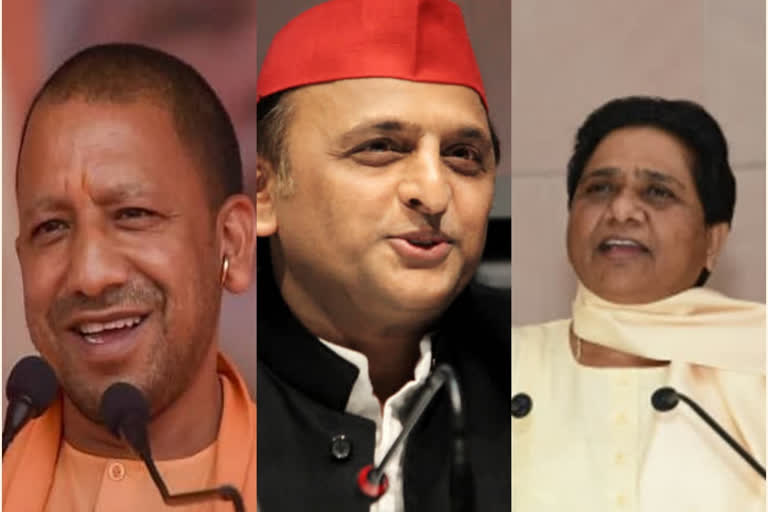Lucknow: With the Uttar Pradesh assembly elections approaching, all political parties are busy drawing out their respective strategies. In their bid to woo voters of different castes, some parties are holding conferences while others are taking out yatras.
The main opposition party of the state, the Samajwadi Party (SP), has decided to take out a 'Kisan, Naujawan Patel Yatra' in seven phases to cater to the majority of backward voters. This yatra will be taken out under the leadership of the party's state president Naresh Uttam Patel, who himself comes from a backward class. Of the about 45 percent backward caste voters in the state, 10 percent are Yadavs and it is believed that their vote largely goes to the SP. If the SP is successful in making a dent in the remaining about 35 percent of the OBC votes, then it will be decisive.
Barring the 10 per cent Yadav voters dominated by the SP, the remaining 35 percent backward caste voters are being wooed by all parties. After the death of former Union Minister Beni Prasad Verma, there has been no big Kurmi leader in the SP. This is the reason why the party has bet on Naresh Uttam Patel by making him the state president. The party hopes that he will be able to bring the votes of Kurmis that go to the BJP towards the SP.
Also read:SP, BSP, Congress alliance cannot defeat BJP in UP polls, claims Ramdas Athawale
It may be mentioned that after the Yadavs, the Kurmi or Patel voters comprise the largest number of OBCs. The Kurmis also include Gangwar, Sachan, Naniranjan, and Katiyar. These 35 percent of the voters play a decisive role.
Sonelal Patel, former president of Apna Dal, was a well-known leader of this community. Now Apna Dal (S)'s chief and Union Minister Anupriya Patel is is considered to have a good hold on that community. Anupriya's younger sister Pallavi Patel had also formed her own party in the name of Apna Dal (Krishna). However, he could not achieve notable success. The influence of Anupriya Patel's Apna Dal (S) has been seen more in the districts around Prayagraj Mandal. Analysts believe that being an ally, she helps the BJP in other areas as well.
Kurmi voters are considered to have a great influence on 30 to 35 seats in the state. At the same time, 78 Lok Sabha seats also come under the influence of this vote bank. This is the reason why the Patel Yatra of the SP is specially focusing on those seats where Kurmi voters are in large numbers. While Naresh Uttam Patel is making his mark as a Kurmi leader in the SP, the current state president of the BJP, Swatantra Dev Singh, is considered a prominent leader of the Kurmis. Earlier, Om Prakash Singh and Vinay Katiyar have also been the state presidents of the BJP and both of them are also Kurmi leaders. Beni Prasad Verma of the SP was also a big leader of the Kurmis. Mukut Bihari Verma, a minister in the Yogi Adityanath government, who was elected from the Kaiserganj Legislative Assembly seat of Bahraich, is also from the Kurmi community and is considered a leader of this caste.
Also read:UP elections: Raja Bhaiya's party may have alliance with BJP
